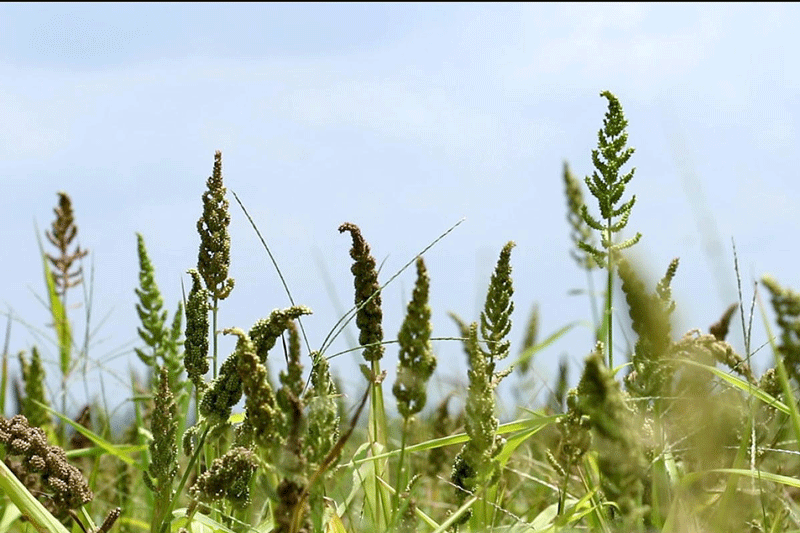
In the past few weeks, millets have been making a return in Prime Minister Narendra Modi’s speeches. The mention of millets in the PM’s speeches can be traced back to November 2017, and since mid 2018 the Department of Agriculture and the NITI Aayog are taking some steps to bring millets into the National Food Security Mission (NFSM) and other programs. While these are welcome pronouncements and steps in the right direction, in this article I shall focus on two areas that the PM has highlighted in his recent speech – financial and environmental benefits to producer communities and better nutrition to consumers.
It is true that millets can grow on less fertile soil with minimal inputs. In pursuit of increasing production, as was done with paddy, there is a call for high yielding varieties and better techniques. The agricultural history of almost every focus crop – paddy, pigeon pea, cotton, ground nut, sun flower, etc. shows that whenever farmers have give up on local, indigenous seeds and traditional cultivation practices to adopt the seeds and practices prescribed by such missions, the cost of production increases, dependency of the farmers on external inputs increases, quality of soil decreases, the water table drops and agro-biodiversity is thrown by the wayside.
How would applying the same methods on millets bring about a different outcome? There is an immediate need to discuss and deliberate on the methods of crop promotion and the failures of the Green Revolution. Replacing paddy with millets will be yet another eye wash – new fodder for the rapacious, polluting and plundering beast that today’s agricultural production has become.
In order to derive maximum benefits from a grain, we need to process them in such a way that the nutrition is retained and conveyed to the consumer. When it comes to cereal grains there are two types of grains – the naked ones like wheat, sorghum (jola), pearl millet (sajje) and finger millet (ragi) that do not have a husk and the husked grains like paddy (bhatta), and many millets such as foxtail (navane), little (saame), proso (baragu), kodo (haraka), barnyard (oodarlu) and brown top (korle).
We humans cannot digest the hard cellulosic husk and as part of the processing, we need to dehusk the grains. Just within this husk layer is the bran – a thin, fragile and often colourful layer rich in fibres, minerals and essential fatty acids. The innermost component of a cereal grain, making up most of its mass and volume, is the endosperm or rice kernel – a store house of carbohydrates.
Most of the nutritional richness of husked cereal grains, whether it is any of the husked millets or paddy, is in the fragile bran layer. This is not something new. It was well known to the agricultural engineers and technology developers working on paddy processing. The pursuit to increase the value realisation from the supply chain led to the removal of the bran layer and its monetisation into a separate product – rice bran oil.
So effectively, the staple food of billions of people in the country was made nutritionally deficient to sweeten the deal for grain processors. In order to reclaim the language, quite a few people today are referring to rice that has been stripped of its bran as bleached rice – there is nothing ‘polished’ about a cereal grain that has been whitened for visual appeal. In fact the government would be better served to first advocate for and promote paddy rice with its bran retained, i.e. less polished/ less bleached rice, if it is serious about improving the nutrition made available to consumers.
There are challenges to retaining the bran – the shelf life of the rice decreases and it is more susceptible to pests. But if we are serious about providing better nutrition, we need to take on these problems and find process and technology solutions that do not require removing of the bran itself!
Millets, being dry land crops, have far richer bran layers when compared to paddy. So conveying the nutritional value of these grains would require that the processing of these grains should produce unbleached natural rice. Unfortunately, machines, process control and skill development in the processing of grains have so far been completely missing in almost all NFSM interventions. The millet revolution, as it is being rolled out today, is effectively a nutritional jumla – talking about nutrition in speeches, while feeding the fat cats of industry.
The world over, scientists and conservationists are advocating for increasing seed diversity to improve resilience of food systems in the times of climate crisis. So it is imperative that the various agencies responsible for realising the PM’s words rework their plans and correct some critical aspects of the programs being implemented and in the pipeline. Otherwise, we shall be committing the mistakes of the Green Revolution all over again in the name of the Millet Revolution.
(Dwiji Guru is a Bengaluru-based independent researcher, advocate and consultant for sustainable food systems with a focus on technology, and its politics)
The views expressed above are the author’s own. They do not necessarily reflect the views of DH.